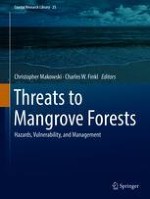2018 | OriginalPaper | Chapter
26. Conserving Mangroves for Their Blue Carbon: Insights and Prospects for Community-Based Mangrove Management in Southeast Asia
Authors : Dixon T. Gevaña, Leni D. Camacho, Juan M. Pulhin
Published in: Threats to Mangrove Forests
Publisher: Springer International Publishing
Activate our intelligent search to find suitable subject content or patents.
Select sections of text to find matching patents with Artificial Intelligence. powered by
Select sections of text to find additional relevant content using AI-assisted search. powered by
